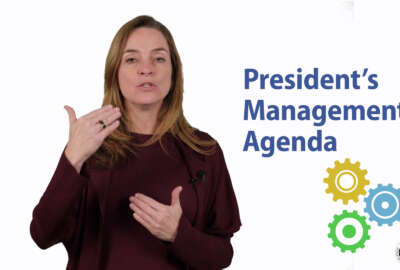
Tiny HHS agency turned FEVS scores around with ‘purpose-driven’ employees
Federal Occupational Health, a fee-for-service agency housed within the Department of Health and Human Resources, saw a dramatic turnaround in its Federal Employee...
The Federal Employee Viewpoint Survey saw fewer big, turnaround success stories in the 2018 data compared to previous years.
But lost among the nearly half-million governmentwide responses, the 69-employee workforce at Federal Occupational Health, a fee-for-service agency housed within the Department of Health and Human Services, told a different story about their office than what previous data has shown: that in the years following several rounds of management changeover, employees felt more satisfied with their workplace than before, despite a diminished headcount and an increasing workload.
The agency’s FEVS scores had reached historic lows in 2015, with only 52% of its employees rating the agency favorably. Michael Anderson, a senior consultant for FOH, attributed those low scores in part to the 2013 shutdown, which also led to a shakeup in the agency’s leadership and workforce.
Bradley Christ, FOH’s director of behavioral health services, said the agency faced a management-directed reassignment that let to “massive turnover” of 15 leadership positions, 10 of which happened within a year.
“So we had a lot of turmoil going on,” Christ said June 12 at American University’s Key Executive Leadership Conference. “And consequently, our FEVS scores reflected that.”
Looking to bounce back from those low numbers, FOH officials focused their improvement strategy on five drivers: performance feedback, collaboration, merit system principles, training and development, and work-life balance.
But a few years into this effort, the agency tweaked its FEVS improvement strategy to include one more variable: a sense of purpose.
“Purpose-driven professionals are attracted to the government,” Anderson. “Purpose-driven simply means that you put making an impact in the lives of others above money and advancement — not that they’re not important. But what really drives you is making in an impact in your work.”
With purpose in mind, FOH created a “strategic narrative” that focused on the big-picture impact of how the agency makes a difference to other federal employees.
While not a household name, FOH runs 300 clinics on federal work sites across the country, and has provided emergency support services to federal employees following the Sept. 11, 2001 attacks, Hurricane Katrina, the 1995 Oklahoma City bombing and more.
The agency was created in 1946 in response to what Anderson described as an “alarmingly high” accident rate at World War II-era federal workplaces. In 1941, for example, the Agriculture Department opened up a small emergency room to treat its 9,000 worker workforce, and ended up treating nearly 30,000 cases that year.
But in order to build that sense of purpose for the here and now, Yasmine Bradshaw, the agency’s associate director of organizational development and leadership, FOH management held listening sessions with its employees and also revamped its orientation process for new hires.
“A lot of times when you’re onboarding in organizations, you never meet the leadership,” Bradshaw said. “Our leadership is present, doing that onboarding, so that from the beginning, we are showing even the new employees that the leadership is involved, and we want a healthy culture for the organization.”
Other improvements included employee appreciation days, where employees can give a shout-out to their coworkers or to a whole team, and meditation sessions employees can take during their lunch breaks.
“It’s a small token, but it means a lot just to be acknowledged of the work that you are doing toward the mission,” Bradshaw said.
FOH management also sat down with employees and drafted an exhaustive list of all the tasks each employee did – and then discussed whether how best to distribute those asks amongst the workforce.
“There were some areas where people maybe were lending a hand in areas that weren’t really their area of responsibility,” Christ said. “Having managers work with their direct reports and delve into the actual tasks and functions they do is a really interesting communication exercise.”
But all of these efforts paid off: In last year’s scorecard, FOH reported 75% of its employees were satisfied with their workplace.
“That’s a validation that we’re heading in the right direction,” Anderson said.
Beyond employee satisfaction, business has also improved. The agency, which receives no congressional appropriations, brought in $162 million of revenue in fiscal 2015, back when it had a headcount of 91 employees and bottomed-out FEVS scores. But by FY 18, revenue grew to $183 million, despite streamlining its workforce to 69 employees.
“What’s happening is, we were training our workforce, we were making sure we had the right people … we were equipping people with the tools that they needed,” Christ said. “The people that survived all that turnover … were people that were really committed to our mission and what we’re doing and very dedicated to our customers.”
FOH’s customers seem to agree. When asked in a recent survey whether FOH’s services were beneficial to their agencies, 25 of the agency’s 40 biggest customers said they “strongly agree.” Another 29 customers gave favorable ratings to the cost-effectiveness of FOH’s services.
Copyright © 2025 Federal News Network. All rights reserved. This website is not intended for users located within the European Economic Area.
Jory Heckman is a reporter at Federal News Network covering U.S. Postal Service, IRS, big data and technology issues.
Follow @jheckmanWFED
Related Stories





